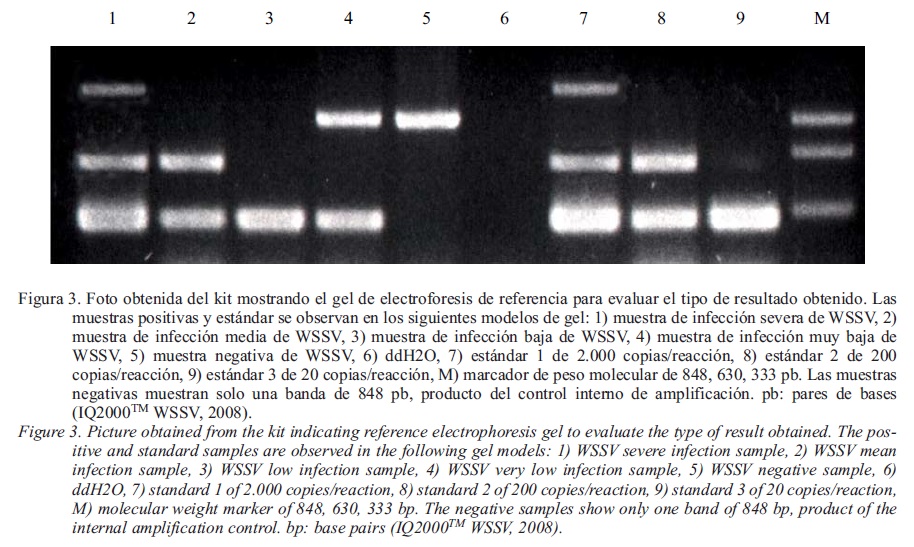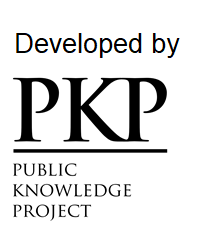Monitoring of the white spot syndrome virus (WSSV) in Argentine red shrimp (Pleoticus muelleri) samples during 2010-2014 in Argentina
DOI:
https://doi.org/10.47193/mafis.3212019061802Keywords:
White spot syndrome virus (WSSV), Argentine red shrimp, Pleoticus muelleri, health controls, Rawson, San Jorge Gulf, ArgentinaAbstract
Argentine red shrimp (Pleoticus muelleri) fishery, one of the most important in the Argentine Sea, exceeded in 2016 50% of the total value of fishing exports. The implementation and development of health controls are requirements of international trade. Among the pathogens that affect crustaceans is the White spot syndrome virus (WSSV) and, according to the World Organisation for Animal Health (OIE), it is a mandatory reportable disease. Due to the need to count on scientific information to establish the sanitary state of the resource with respect to WSSV, the aim of this work was to continuously monitor the viral infection in wild red shrimp. Samples caught in areas close to Rawson port and San Jorge Gulf during 2010-2014 were studied. The total of 506 specimens analized with the nested PCR technique using the IQ2000TM WSSV Commercial Kit, a method validated by the OIE, were virus negative. It is concluded that during the five years of continuous monitoring there was no evidence of WSSV in Argentine red shrimp. In this study a scientific data base that would help to guarantee the sanitary quality and international trade for said fishery of commercial interest in Argentina is offered. In addition, tools that would allow to protect the product against possible sanctions and unnecessary trade barriers are provided.
Downloads
Metrics
References
Bateman KS, Tew I, French C, Hicks RJ, Martin P, Munro J, Stentiford GD. 2012. Susceptibility to infection and pathogenicity of White Spot Disease (WSD) in non-model crustacean host taxa from temperate regions. J Inverteb Pathol. 110: 340-351.
Bertuche D, Fischbach C, Roux A, Fernández M, Piñero R. 1999. Caracterización de la pesquería de langostino y diagnóstico del estado del recurso en 1999. Inf Téc Int DNI-INIDEP Nº 69/1999. 15 p.
Bustillo-Ruiz MI, Escobedo-Bonilla CM, Sotelo-Mundo RR. 2009. A review of pathogenesis and molecular strategies against white spot syndrome virus of penaeid shrimp. Rev Biol Mar Oceanog. 44: 1-11.
Chou HY, Huang CY, Wang CH, Chiang HC, Lo CF. 1995. Pathogenicity of a baculovirus infection causing white spot syndrome in cultured penaeid shrimp in Taiwan. Dis Aquat Organ. 23: 165-173.
Claydon K, Cullen B, Owens L. 2004. OIE white spot syndrome virus PCR gives false-positive results in Cherax quadricarinatus. Dis Aquat Org. 62: 265-268.
Costagliola M, Fischbach C, Jurquiza V, de la Garza J, Molinari G, Bertuche D. 2013. Situación sanitaria actual de la pesquería del langostino patagónico (Pleoticus muelleri) en relación al Virus del Síndrome de la Mancha Blanca (WSSV) en Argentina. Inf Téc Of INIDEP Nº 1/2013. 10 p.
Costagliola M, Fischbach K, Jurquiza V, Spanjersberg G, Moriondo P, Andreoli G, de la Garza J. 2011. Ausencia del Virus del Síndrome de la Mancha Blanca (WSSV) en muestras de langostino (Pleoticus muelleri) desembarcado en el Puerto de Rawson entre noviembre de 2010 y marzo de 2011. Inf Invest INIDEP Nº 66/2011. 11 p.
Escobedo-Bonilla CM, Alday-Sanz V, Wille M, Sorgeloos P, Pensaert MB, Nauwynck HJ. 2008. A review on the morphology, molecular characterization, morphogenesis and pathogenesis of white spot syndrome virus. J Fish Dis. 31: 1-18.
Fischbach C, Bertuche D. 2017. Pesquería del langostino, temporada 2016. Inf Téc Of INIDEP Nº 7/2017. 23 p.
Fischbach C, de da Garza J, Bertuche D. 2006. La pesquería del langostino patagónico en el período 1991-2005. Inf. Téc. INIDEP Nº 3/2006. 21 p.
Hasson KW, Fan Y, Reisinger T, Venuti J, Varner PW. 2006. White-spot syndrome virus (WSSV) introduction into the Gulf of Mexico and Texas freshwater systems through imported, frozen bait-shrimp. Dis Aquat Organ. 71: 91-100.
IQ2000TM WSSV. 2008. Instruction Manual. Manufacturer: GeneReach Biotecnology Corp. Fitness for purpose valitated and certified by OIE. Register number: 20080304.
Jurquiza V, Quintana S. 2016. Desarrollo de una técnica de reacción de la polimerasa en tiempo real (RT-PCR), con Evagreen como agente intercalante, para la detección del Virus del Síndrome de la Mancha Blanca (WSSV) en crustáceos. Inf Invest INIDEP Nº 87/2016. 14 p.
Lightner D, Pantoja C. 2003. Manual para el diagnóstico de Enfermedades del Camarón. United Stated Department of Agriculture (USDA). 92 p.
Lightner D, Redman RM. 1998. Shrimp diseases and current diagnostic methods. Aquaculture. 164: 201-220.
Lo CF, Leu JH, Ho CH, Chen CH, Peng SE, Chen YT, Chou CM, Yeh PY, Huang CJ, Chou HY, et al. 1996. Detection of baculovirus associated with white spot syndrome (WSBV) in penaeid shrimp using polymerase chain reaction. Dis Aquat Org. 25: 133-141.
Maeda M, Itami T, Mizuki E, Tanaka R, Yoshizu Y, Doi K, Yasunaga-Aoki C, Takahashi Y, Kawarabata T. 2000. Red swamp crawfish (Procambarus clarkii): an alternative experimental host in the study of white spot syndrome virus. Acta Virol. 44: 371-374.
Martorelli S, Overstreet R, Javonovich J. 2010. First report of viral pathogens WSSV and IHHNV in Argentine crustaceans. Bull Mar Sci. 86 (1): 117-131.
Martorelli SR, Marcotegui P, Montes M, Panei CJ. 2017. Screening for WSSV in crustacean from marine areas of Buenos Aires, Argentina. Examen para WSSV en crustáceos de áreas marinas de Buenos Aires, Argentina. Rev Biol Mar Oceanogr. 52: 635-639.
Martorelli S, Alda MP, Marcotegui PS, Montes MM, La Sala L. 2012. New locations and parasitological findings for the invasive shrimp Palaemon macrodactylus in emperate southwestern Atlantic coastal waters. Aq Biol. 15: 153-157.
[OIE] Organización Mundial de Sanidad Animal. 2016a. Código Sanitario para los animales acuáticos. [consultado 30 septiembre 2016]. http://www.oie.int/es/normas-internacionales/codigo-acuatico/acceso-en-linea.
[OIE] Organización Mundial de Sanidad Animal. 2016b. Manual de Pruebas de Diagnóstico para los animales acuáticos. Parte 2. Sección 2.2 Capítulo 2.2.7. [consultado 30 septiembre 2016]. http://www.oie.int/es/normas-internacionales/manual-acuatico/acceso-en-linea.
Raibenberg F, Ballete CI, Alvarez MA, Cannilla ML, Zenobi C, Alcober-Jazbec M, Ferreyra Armas MC, Escobar E, Sanguinetti R, Romano LA. 2012. Primary diagnosis and surveillance of notifiable viral diseases of crustaceans in wild red shrimp Pleoticus muelleri in the gulf San Jorge, Argentina. Proceedings of AQUA2012, Praga.
Raibenberg F, Ballete CI, Alvarez M.A., Cannilla ML, Zenobi C, Alcober-Jazbec M, Ferreyra Armas MC, Escobar E, Sanguinetti R, Romano LA. 2014. Molecular and histopathologic survey of OIE notifiable viral diseases in the native wild red prawn Pleoticus muelleri from Rawson, Argentina. Proceedings of WAS2014, Adelaide.
Roccamo AM, Cervellini PM, Piccolo MC, Barrantes FJ. 2010. Optimización de una técnica para la detección de patologías virales en Pleoticus muelleri (Bate, 1988) en el estuario de Bahía Blanca, Argentina. GEOACTA. 35: 40-47.
Sánchez-Paz A. 2010. White spot syndrome virus: an overview on an emergent concern. Vet Res. 41 (6): 41-43.
Sahul Hameed AS, Yoganandhan K, Sathish S, Rasheed M, Murugan V, Jayaraman K. 2001. White spot syndrome virus (WSSV) in two species of freshwater crabs (Paratelphusa hydrodomous and P. pulvinata). Aquaculture. 201: 179-186.
[SENASA] Servicio Nacional de Sanidad y Calidad Agroalimentaria. 2011. Estudio epidemiológico para la determinación del estado sanitario de las poblaciones silvestres de langostinos de la especie Pleoticus muelleri en la República Argentina. Programa de Enfermedades de los Animales Acuáticos. Dirección de Programación Sanitaria Dirección Nacional de Sanidad Animal SENASA. [consultado 26 junio 2017]. https://viejaweb.senasa.gov.ar/Archivos/FileFile7245Informe_estudio_epidemiologico_enfermedades_crustaceos2.pdf.
[SENASA] Servicio Nacional de Sanidad y Calidad Agroalimentaria. 2013. Estudio epidemiológico de las enfermedades Mancha Blanca, Mionecrosis Infecciosa, Necrosis Hematopoyética e Hipodérmica Infecciosa, Sindrome de Taura y Cabeza Amarilla, en poblaciones silvestres de langostino para la determinación del estado sanitario de las poblaciones silvestres de langostinos (Pleoticus muelleri) en el Golfo San Jorge, República Argentina. Programa de Enfermedades de los Animales Acuáticos. Dirección de Programación Sanitaria, Dirección Nacional de Sanidad Animal SENASA. 20 p.
[SSPYA] Subsecretaria de Pesca y Acuicultura. 2016. Dirección de Economía Pesquera. Exportaciones e importaciones pesqueras - 2016. [consultado 26 junio 2017]. http://www.agroindustria.gob.ar/sitio/areas/pesca_maritima/informes/economia/_archivos//000000_Informes/800000_Exportaciones%20e%20importaciones%20pesqueras%20Informes%20Anuales/000011_2016/170517_Exportaciones%20e%20Importaciones%20Pesqueras%202016.pdf.
Tsai YL, Lin YC, Chou PH, Teng PH, Lee PY. 2012. Detection of White Spot Syndrome Virus by polymerase chain reaction performed under insulated isothermal conditions. J Virol Methods. 181 (1): 134-137.

Published
How to Cite
Issue
Section
License
Copyright (c) 2020 Veronica Jurquiza , Juan de la Garza, Gabriela Andreoli , Paula Moriondo Danovaro

This work is licensed under a Creative Commons Attribution-NonCommercial-ShareAlike 4.0 International License.
Authors of articles published in Marine and Fishery Sciences retain copyright on their articles, except for any third-party images and other materials added by Marine and Fishery Sciences, which are subject to copyright of their respective owners. Authors are therefore free to disseminate and re-publish their articles, subject to any requirements of third-party copyright owners and subject to the original publication being fully cited. Visitors may also download and forward articles subject to the citation requirements. The ability to copy, download, forward or otherwise distribute any materials is always subject to any copyright notices displayed. Copyright notices must be displayed prominently and may not be obliterated, deleted or hidden, totally or partially.
This journal offers authors an Open Access policy. Users are allowed to read, download, copy, distribute, print, search, or link to the full texts of the articles, or use them for any other legal purpose within the Creative Commons 4.0 license (BY-NC-SA), without asking prior permission from the publisher or the author. This is in accordance with the BOAI definition of Open Access.




























